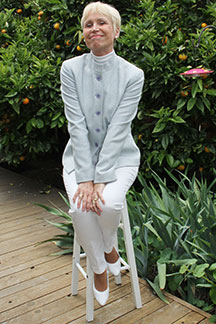Christian Führer passed away last Monday, June 30, 2014, at age 71. His name and that of the Nikolaikirche–St. Nicholas Church–in Leipzig will forever be linked to East Germany’s peaceful revolution against communist rule. As Pastor, Führer led weekly Monday night Friedensgebete–peace prayers. These meetings became the foundation of the demonstrations that ultimately brought down the German Democratic Republic (East Germany) and led to German reunification.
Nikolaikirche
The church was built around the time that Leipzig was founded in 1165. It became a Protestant seat in 1539 and has not changed much since the 16th century. Johann Sebastian Bach played the organ here in the 18th century. In 1980 Rev. Führer became pastor at the Nikolaikirche. At that time the Cold War divided the world into East and West, and a wall split Germany into the DDR (East Germany) and the BRD (West Germany). Religion was frowned upon by communism so that atheism was the norm in East Germany. Churches like the Nikolaikirche were spied upon.
Peaceful revolution of 1989
“In the DDR, the church provided the only free space,” Führer said in an interview with Religion & Ethics News Weekly. “Everything that could not be discussed in public could be discussed in church.” http://www.pbs.org/wnet/religionandethics/2009/11/06/november-6-2009-the-rev-christian-fuhrer-extended-interview/4843/. To encourage a dialogue on topics that were otherwise taboo, Christian Führer established the Monday night prayer meetings. The gatherings gained in popularity and attendance soon exceeded the church’s 2,000-seat capacity. By early 1989 the East German authorities tried to stop Führer’s Friedensgebete by arresting random “suspects” inside and outside the church. But the meetings continued. To the contrary, the number of participants grew even larger. In September 1989, the prayers turned into peaceful demonstrations. Thousands of people held candles and carried banners. Although the police tried to keep the demonstrations in check, the number of demonstrators continued to grow.
October Showdown
On 9 October 1989, 100,000 demonstrators gathered in the center of Leipzig. They were met by 8,000 armed police with orders to shoot. Demonstrators shouted, “We are the people” and “No violence.” A blood bath seemed likely, but organizers appealed to the demonstrators to remain peaceful. They complied. Miraculously, not one shot fell. Quickly, protests swept through the rest of East Germany and led to the opening of the borders on 9 November 1989. Christian Führer had provided the cradle for this peaceful revolution. His name will remain inextricably entwined with the fall of the Berlin Wall.
For a sneak peek at the first 20+ pages of my memoir, Walled-In: A West Berlin Girl’s Journey to Freedom, click “Download a free excerpt” on my home page and feel free to follow my blog about anything German: historic and current events, people, places and food.
Walled-In is my story of growing up in Berlin during the Cold War. Juxtaposing the events that engulfed Berlin during the Berlin Blockade, the Berlin Airlift, the Berlin Wall and Kennedy’s Berlin visit with the struggle against my equally insurmountable parental walls, Walled-In is about freedom vs. conformity, conflict vs. harmony, domination vs. submission, loyalty vs. betrayal.

















